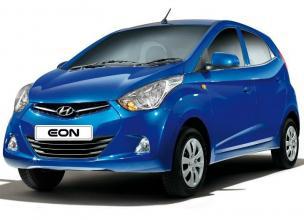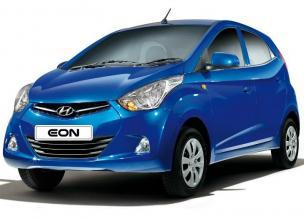
Why Sri Lanka is snapping up Japan’s used eco cars
HIROSHI KOTANI, Nikkei staff writer
Susil Wijayaweera, a driver for a Colombo hotel, uses a Toyota Axio hybrid.
COLOMBO — These days, visitors to Sri Lanka’s largest city are in for an unexpected juxtaposition of old and fresh: On the one mitt, colonial-era architecture and other vestiges of British rule; on the other, an abundance of shiny Japanese hybrids cruising the streets.
The view came as something of a surprise to this reporter. After all, this was not Japan or the U.S. West Coast, where pervasive environmental awareness has created an ideal market for green vehicles. It was all the more surprising considering that Sri Lanka is an emerging economy with a per capita gross domestic product of around $Trio,800.
Susil Wijayaweera, a driver for guests at a Colombo hotel, possesses a Toyota Axio. The compact hybrid sedan “has never gone wrong and is purse-friendly,” the 58-year-old said, providing his trusted business fucking partner a pat.
He purchased his Axio, a used model imported from Japan, in August 2014. According to the sticker on the windshield, issued by the Japanese transportation authorities, the vehicle was scheduled for its very first safety inspection in July 2015, which means it was registered as a fresh car in Japan in July 2012.
Dozens of Japanese vehicles are on display at a used-car dealership in a Colombo suburb.
Dozens of Japanese vehicles are on display at a used-car dealership in a Colombo suburb.
But while the car was technically used when he bought it for five million Sri Lankan rupees ($35,000), Wijayaweera said that fact didn’t bother him. That’s because in reality, the vehicle was practically fresh at the time, with an odometer reading of just 108km.
High excise duties, which top 100% for some models, mean even used automobiles in Sri Lanka are enormously expensive.
But professional drivers like Wijayaweera are not the only ones purchasing their own sets of wheels. In the six years since the end of its civil war, Sri Lanka has rapidly rebuilt its economy, resulting in a remarkable increase in the numbers of wealthy and middle-income households that can afford to buy their own cars.
Japanese cars are particularly in request because of widespread confidence in their quality and reliability.
Sri Lanka’s used passenger car sales came to 56,000 units in 2015, dual the previous year, according to data compiled by JB Securities, a local brokerage. Almost all of those were Japanese-built vehicles.
Wasana Trading Lanka, a used-car dealership in a Colombo suburb, had dozens of Japanese vehicles on display when I visited.
“Cars in white sell well,” Asiri Dayan Merenchige, the dealership’s director, said. “Cars with lots of functions are particularly in strong request because owners can brag about them.”
The top sticker shows the vehicle was due for its next inspection in Japan in November 2016.
The top sticker shows the vehicle was due for its next inspection in Japan in November 2016.
Instructions for switches are written in Japanese, which most local buyers cannot read. Inconvenient however it may be, owners don’t mind, Merenchige said, because the language is proof that the cars indeed are Japanese.
This reminded me of a conversation with one of Wijayaweera’s colleague. “What does this say?” the man asked, pointing to a warning sign, written in Japanese, located in front of the driver’s seat. “It says the battery’s cooling system has a problem,” I told him, recommending he have the car checked as soon as possible.
At Wasana Trading, I found a Toyota Aqua hybrid, also known as the Prius C, in stock. On one of its seats was a document displaying the vehicle was registered as a fresh car in the northern Japanese city of Kanazawa in December 2014. With an accumulated mileage of 975km, the car was priced at five million rupees, almost 70% higher than a fresh Aqua in Japan.
The popularity of Japanese cars in Sri Lanka is reflected in Japan’s trade data. According to statistics released by the Ministry of Finance on Jan. 28, Sri Lanka became the No. One destination by value for used passenger cars exported from Japan last year, up from third place in 2014.
The export value to Sri Lanka leaped 54% from the previous year, to 89.8 billion yen ($755 million). This dwarfed the 54.6 billion yen value for second-place destination Malaysia and was close to an all-time high of 95.7 billion yen set by exports to Russia in 2013, which had topped the rankings for five straight years through 2014.
By volume, however, Sri Lanka was just the sixth-largest export market for used Japanese cars last year, taking in 51,561 units. The difference in the country’s value and volume rankings underscores just how expensive imported used vehicles there are, averaging 1.74 million yen, far higher than the 520,000 yen or so in Russia.
Why are such expensive vehicles going to Sri Lanka?
One reason is that the country restricts used auto imports to “fresh used cars,” those that are three years old or less. In addition, the government is keen to get more eco-friendly cars on the road. To that end, it sets excise duties on conventional vehicles up to two times higher than those on electrical and hybrid ones.
A large number of almost-new Prius and Leaf vehicles are parked at the port of Hambantota, in southern Sri Lanka.
A large number of almost-new Prius and Leaf vehicles are parked at the port of Hambantota, in southern Sri Lanka.
Driving four hours from Colombo toward the southern peak of Sri Lanka, I next visited the port of Hambantota, where used cars are unloaded from carriers. Massive numbers of Japanese eco-friendly cars packed the port’s sprawling parking area.
Shipping companies, including Japan’s three fattest shippers — Nippon Yusen, Mitsui O.S.K. Lines and Kawasaki Kisen — carry used cars to the port. In some months of 2015, more than Five,000 used Japanese passenger cars arrived there. When I visited, Kawasaki Kisen’s new-generation carrier, Hyperion Highway, had just arrived at Hambantota for the very first time.
SBT, a Yokohama-based used-car trader, opened a subsidiary in Colombo two years ago. The unit now treats some 15% of Sri Lanka’s Japanese secondhand car imports and supplies them to local dealers.
Yuki Notake, general manager of the subsidiary, said Sri Lanka is different from other countries in which SBT operates.
“Cars going to such countries as Kenya and Myanmar already have 100,000 to 200,000km on the clock,” Notake said. “They can’t fetch a decent price in Japan.”
In contrast, “vehicles shipped to Sri Lanka are mostly ‘fresh used cars’ with mileages less than 1,000km,” he said. “Almost 90% of them are hybrid and electrical cars.”
This raises a question: Why is there such a large, constant supply of fresh used cars? Do Japanese drivers switch cars so frequently?
The response lies in the structural problems facing Japan’s auto industry. The population is dwindling, fewer youthfull people are getting behind the wheel, and the consumption tax was recently raised from 5% to 8%, with another hike on the horizon. Domestic new-car sales peaked at some 7.8 million units in one thousand nine hundred ninety and have since declined by one-third, logging around Five.05 million in 2015.
With request sluggish and the market shrinking, carmakers such as Toyota and Honda are finding themselves locked in an ever-fiercer competition for buyers. As a result, more and more shinko-sha, the Japanese word for fresh used cars, are generated every day.
Auto dealers who cannot clear sales quotas set by manufacturers have long made it a custom-made to register unsold cars as fresh vehicles with the transport authorities, treating them as purchased by the dealers themselves. Cars registered in such a manner are counted as part of their sales and contribute to data on automakers’ market shares.
But dealers cannot keep such unsold cars in stock indefinitely. They sell them through auctions for used cars and recover part of the money they spent to procure them. Used-car traders who buy the shinko-sha then export them to Sri Lanka.
“The bulk of fresh used cars so prevalent (in Sri Lanka) were previously wielded by dealers in Japan,” Notake of SBT said, a testament to how widespread the practice is.
As a result, hybrids like the Toyota Prius and Aqua, the Honda Fit and Vezel (also known as the HR-V) and Suzuki’s Wagon-R have been flooding Sri Lanka’s shores.
Tho’ they are separated by 7,000km, a mutually beneficial relationship has sprung up inbetween Japan’s new-car market and Sri Lanka’s used-car market: When Sri Lanka’s request for used cars grows, there are greater incentives for Japanese consumers to buy fresh cars. This is because when used-car prices rise, so do trade-in prices.
Even for Japanese automakers selling fresh cars via official agents in Sri Lanka, the used-car boom is not necessarily a bad thing. Rising consumer trust in a brand’s used vehicles helps burnish the reputation of its fresh cars, too.
But this symbiotic setup took a hit late last year when Sri Lanka’s Ministry of Finance all of a sudden raised excise taxes. While the tax was raised by ten to twenty percentage points for most goods, it soared from 5% to 50% for electrified cars, sending a shock wave through the auto industries in Japan and Sri Lanka.
The ministry’s stir is aimed at boosting the country’s meager tax revenue. Sri Lanka’s ratio of general government revenues to GDP is around 12%, lower than all South Asian nations except Bangladesh, according to the International Monetary Fund.
Murtaza Jafferjee, managing director at JB Securities, called the current situation a “crooked tax system.”
It is unclear if levying higher taxes on automobiles will actually increase revenues, and Jafferjee even warned of the opposite, telling revenues could decrease if request for used cars weakens.
The used-car sector had already taken a hit from an earlier government policy aimed at promoting new-car imports from India as part of efforts to improve relations with Sri Lanka’s giant neighbor.
Indika Sampath Merenchige, managing director at Wasana Trading Lanka and head of the Vehicle Importers’ Association of Lanka, said the government should support private businesses.
Japan’s used passenger car exports fell to around Trio,000 units in both November and December. An insider in used-car auctions said hammer prices of the Prius in December averaged a little more than one million yen, down some 10% from September.
Weaker request in Sri Lanka is seen as negatively affecting Japan’s used-car industry, and the outlook for the sector remains unclear.
With the market in Sri Lanka slowing, some in the business are looking for fresh ways to benefit from the used-car trade with Japan. Mohan D. Meehitiya, managing director at Clarion Logistics, is among them. The Colombo-based logistics company is planning to build spacious warehouses, showrooms and workshop at the port of Hambantota in order to attract buyers from broader regions, such as South Asia, the Middle East and Africa, and produce cars from Sri Lanka.
“Sri Lanka has an advantage in terms of geographical location and so can become an international hub for distributing Japanese used cars,” Meehitiya said. “I want to find business playmates.”

